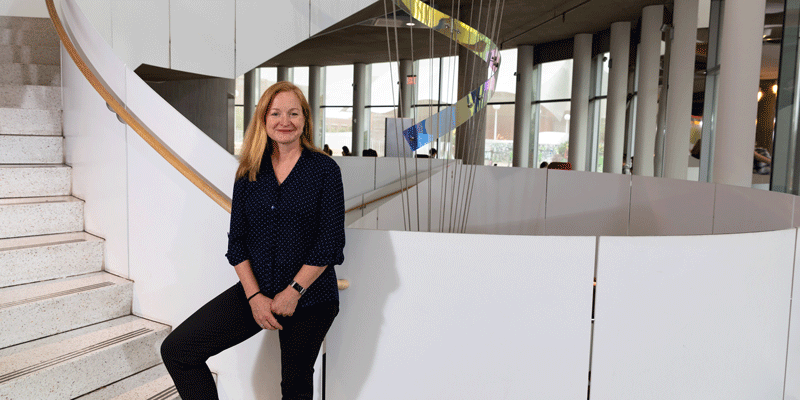Smaller class sizes lead to more equitable class participation in biology courses.

A professor wraps up a 60-minute uninterrupted lecture to a massive introductory biology class. Heads cease bobbing as students adjust to the newfound silence. The professor looks to the audience, asks a question and awaits a response. Raising your hand in a 500-person lecture hall is intimidating for any student. And in this context, it is more likely that a male student will raise their hand than a female student.
Sehoya Cotner, an associate professor in CBS, recently co-authored a study in BioScience with researchers from across the globe, exploring what classroom factors might contribute to this decreased participation by women.
“If you aren't participating, you may feel less confident, less sense of inclusion and less like you ‘belong’ in the class or the discipline. These sentiments may contribute to why women leave STEM more than men do,” Cotner says.
Educational researchers across six institutions examined numerous factors that might fuel this disparity in participation. The size of class emerged as the best indicator of whether or not females participated. The smaller the class, the more likely females were likely to contribute.
Researchers also looked at different types of participation and how different teaching approaches might be able to lessen the participation disparity. The most stark disparity occurs when an instructor poses a question to students in a lecture-hall setting and asks them to respond with no group discussion. In this case, men are most likely to pipe up. Females were far more likely to speak up in front of the whole class after having a conversation in a smaller group first.
“If you use a diversity of strategies to elicit student input, you can get closer to gender parity. This is particularly true if you focus on students working in groups and then contributing to the class,” notes Cotner.
The analysis focused on gender, and thus researchers can’t make definitive conclusions about how class size impacts participation of other student identities. It is quite possible that these trends could apply to other types of students, including first-generation students, LGBTQ students or students from a racial or ethnic group that is underrepresented in STEM.
Large lecture style courses are likely to persist for years to come and Cotner has realistic exceptions. She’d like to see the massive 500-person lecture hall phased out and instructors of larger courses (100-300) think critically about strategies used to engage students.
“Small group interactions allow students to flex their ideas and get feedback before sharing with the larger class. Folks are way more likely to participate in a large group after discussing with their group.”
She’s optimistic that instructors will think about alternate participation channels for their students while continuing work to improve more equitable engagement in the classroom.
—Claire Wilson